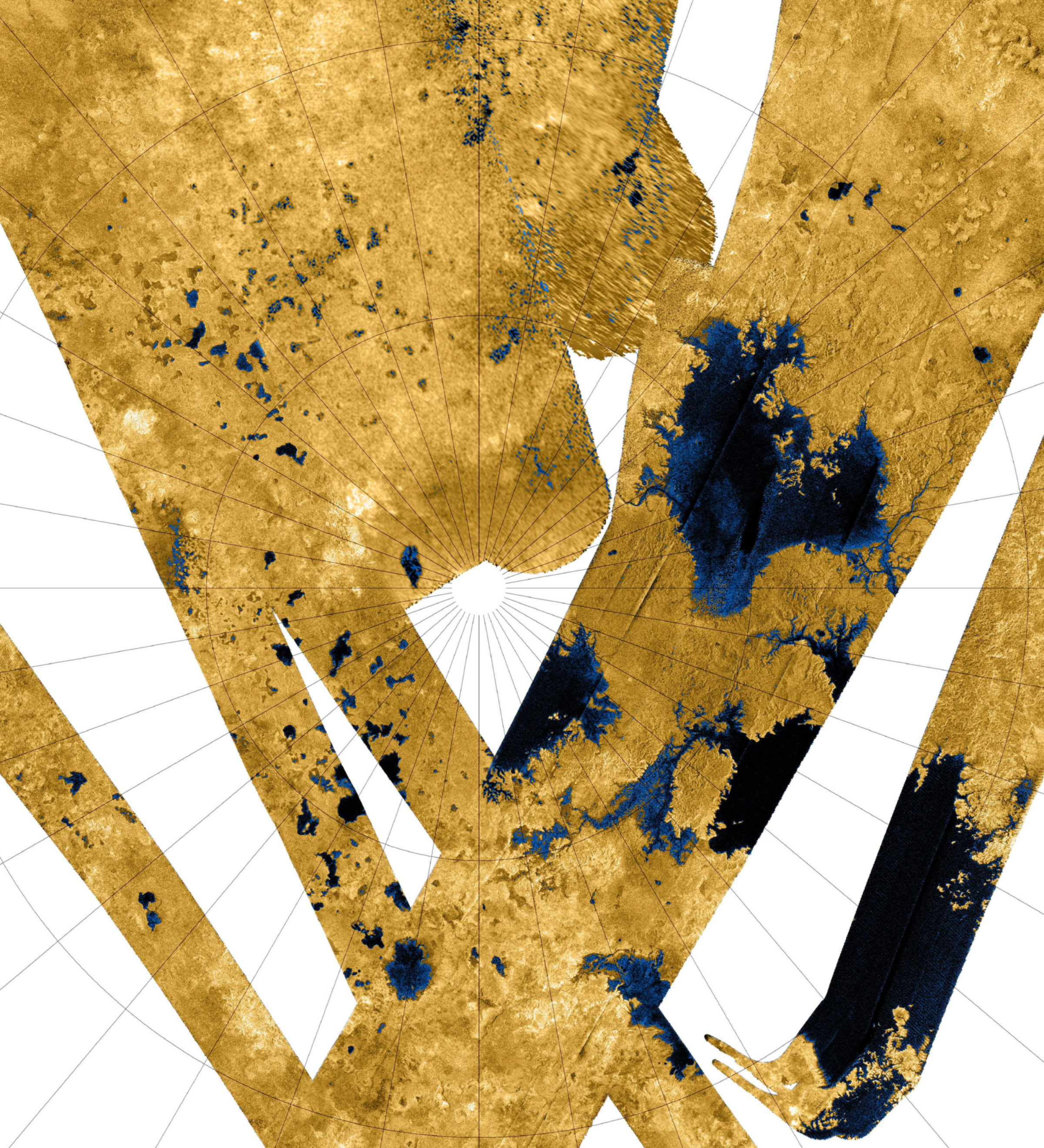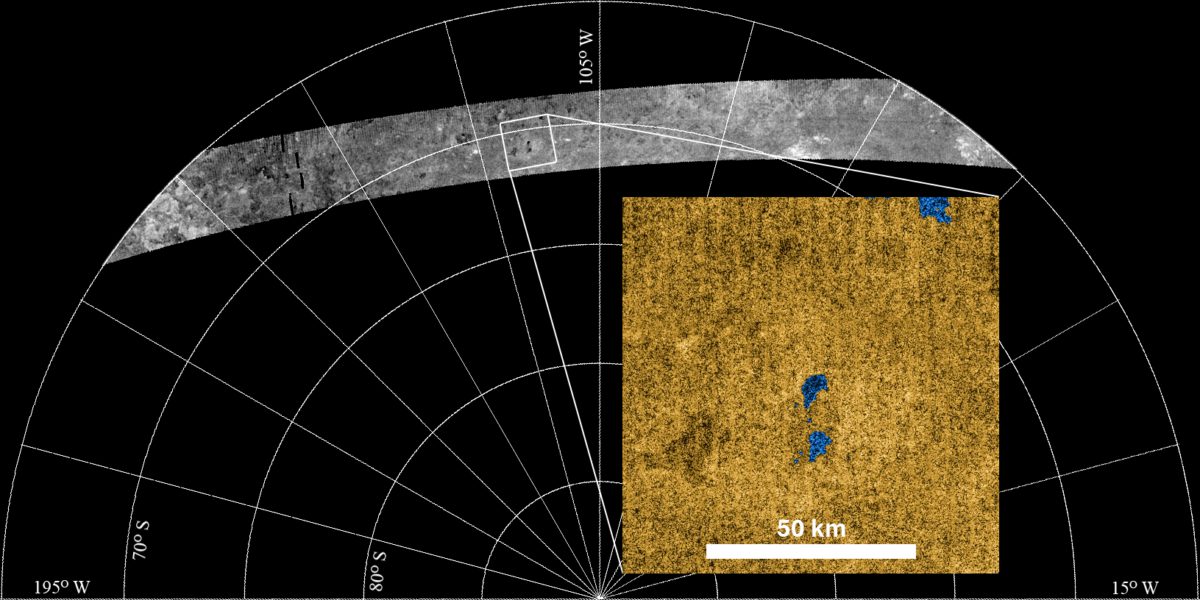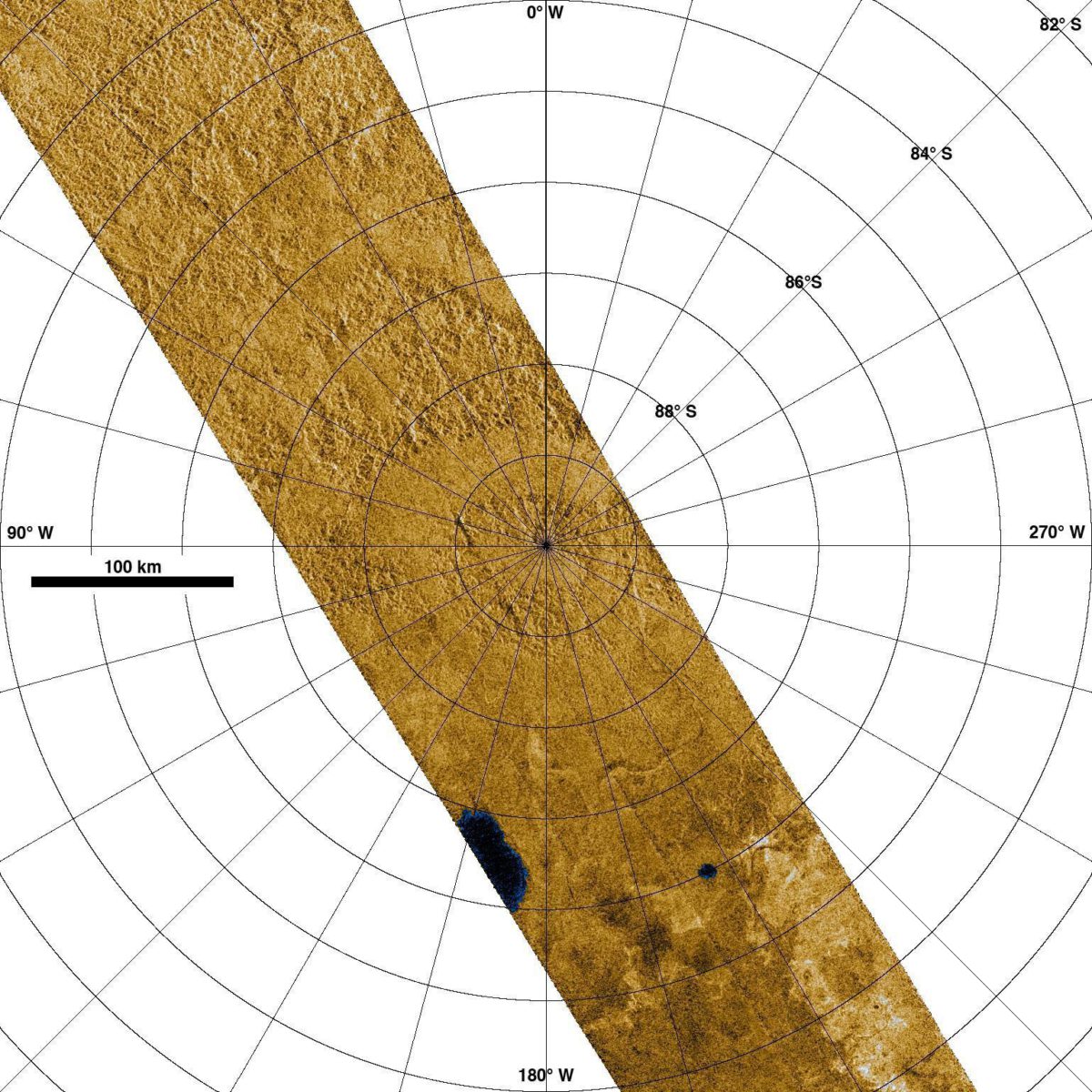Emily Lakdawalla • Jan 11, 2008
Titan's south pole looks pretty dry
One of the major results from the Cassini mission last year was the production of a mosaic of images from its RADAR instrument covering Titan's north pole. Titan's north pole has lakes upon lakes, some big, some small, but everywhere you look, there they are.

The image is a polar projection, with zero longitude (the sub-Saturnian hemisphere) toward the bottom. The leading hemisphere (centered at 90 degrees W) is to the left, and the trailing hemisphere (centered at 270 degrees W) is to the right. The largest lakes are clustered in an area on Titan's trailing hemisphere.Image: NASA / JPL-Caltech
By contrast, there do not appear to be nearly as many lakes in the south. Here's one image showing a south polar swath released in October. There are lots of what appear to be dry lake beds, but only one or two spots that may currently be fluid-filled.

On December 20, Cassini flew straight across the south pole and likewise spotted only one or two lakes.

The fact that you can see dry lakebeds and lots of sinuous river-like features both north and south suggests that the landscapes we see in both places are primarily carved by climatic rather than tectonic events; the fact that one pole is wet while the other is dry suggests that the climate changes with the season, as it's been summer lately in the south and winter in the north. Saturn and Titan will see their equinox in a year and a half, August 2009. Cassini's extended mission will last beyond that, so hopefully we'll get a chance to see the effect of changing seasons on Titan's polar weather.
Speaking of the extended mission, I have thoroughly revised and updated my detailed timeline of Cassini's mission to Saturn, including a complete list of the events to take place during the extended mission. Check it out and see what's in store!
Support our core enterprises
Your support powers our mission to explore worlds, find life, and defend Earth. You make all the difference when you make a gift. Give today!
Donate

 Explore Worlds
Explore Worlds Find Life
Find Life Defend Earth
Defend Earth

